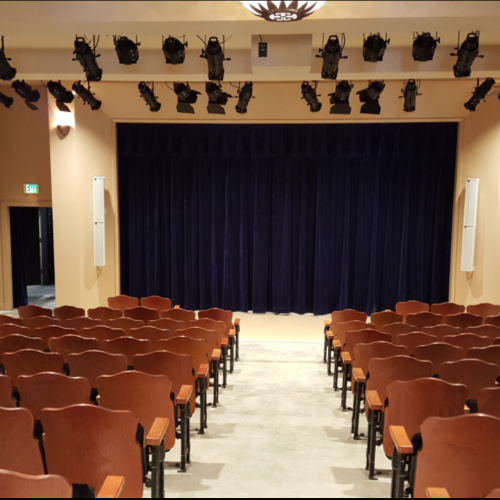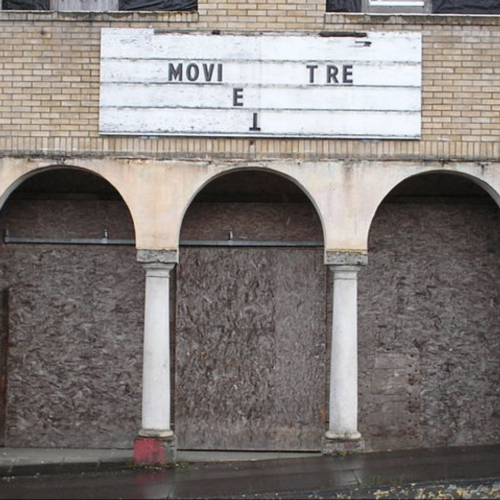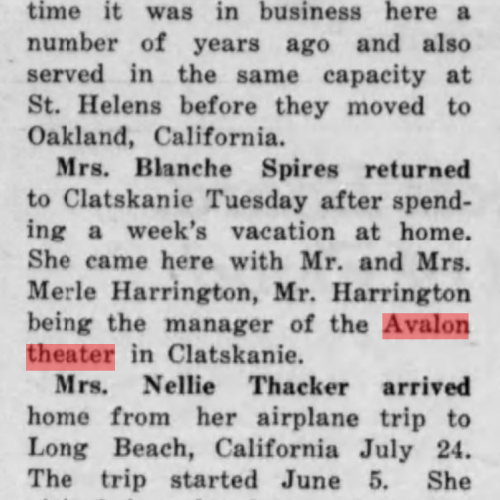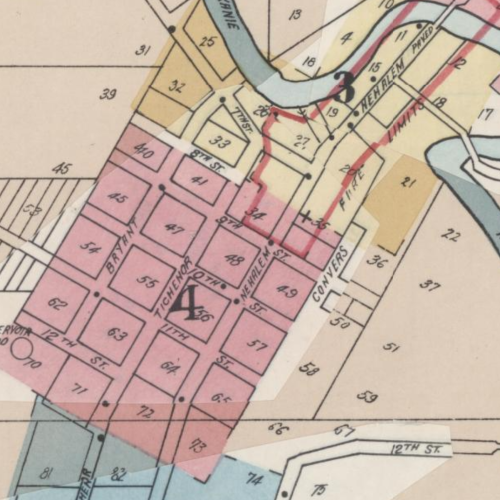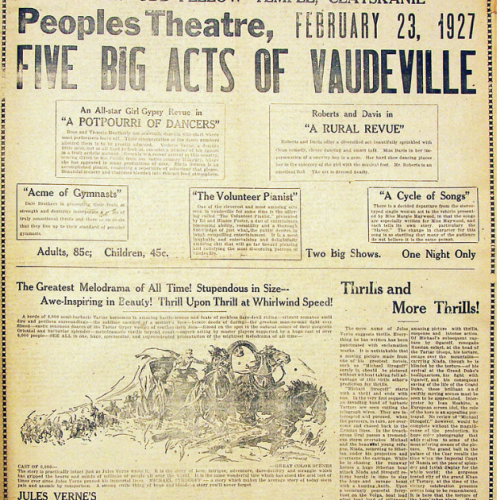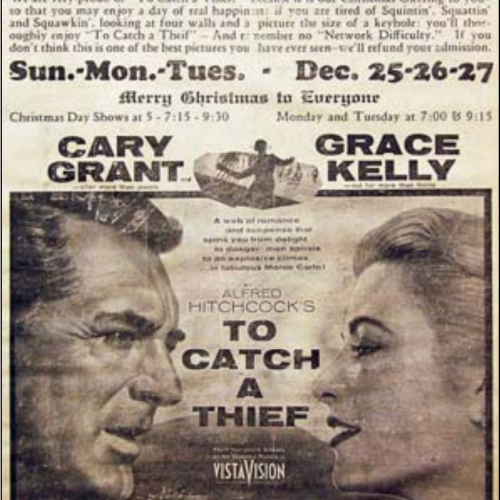Located in Clatskanie, Oregon, within the Clatskanie Cultural Center, is the Avalon Theatre in a building originally constructed in 1926 as an Odd Fellows Hall. The theater operated from 1927 and was known as Peoples Theatre until 1934 when its name was changed to the Avalon Theatre until its closure in 1985. After the theater closed, in the early 2000s, the theater was renovated thanks mostly to a $500,000 bequest from C. Keith Birkenfeld, whom the theater is now named after and known as. After the renovation, the theater now has 160 seats, new sound and lighting systems, vintage seating, and green room and dressing room facilities. To help promote the theater, it frequently collaborated with local organizations to host special events. For instance, a June 1, 1945, advertisement in The Clatskanie Chief invited the public to purchase war bonds and enjoy a free movie in celebration of D-Day. This initiative not only promoted the theater but also supported national efforts during World War II. With the rise of television in the 1950s, the Avalon Theatre faced declining attendance. In response, it crafted creative advertisements to highlight the superior experience of movie-going. A notable example from December 23, 1955, featured in The Clatskanie Chief, addressed the limitations of home television viewing. The ad appealed to those "tired of Squintin', Squattin' and Squawkin', looking at four walls and a picture the size of a keyhole," and promoted the screening of "To Catch a Thief," assuring patrons of no "Network Difficulty."
In Clatskanie, Oregon, the local IOOF chapter, a part of the global fraternal organization that began in England during the 18th century, played a pivotal role in the community's social and cultural development. In 1926, they commissioned the construction of the IOOF Hall, designed by Portland architect Ernst Kroner. This hall was the town's first large concrete building and remains one of its most prominent structures. Beyond serving as a meeting place for the Odd Fellows, the hall housed the Avalon Theater, offering a venue for vaudeville shows, silent films, and later, "talkies." The building also accommodated the local post office, professional offices, and meeting spaces, making it a central hub for various community activities and services.
